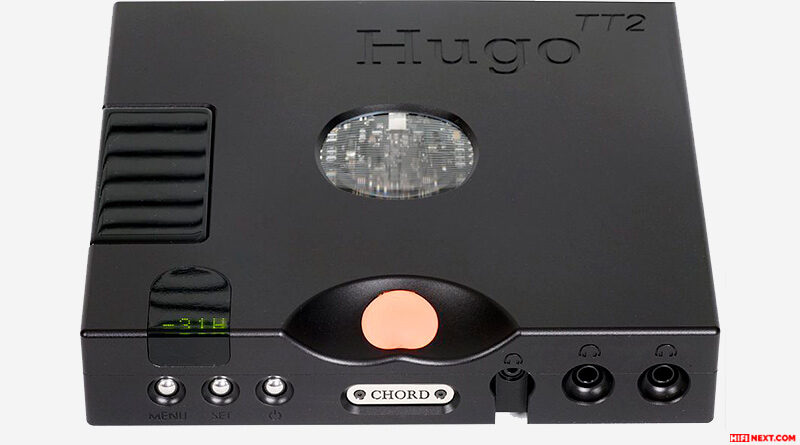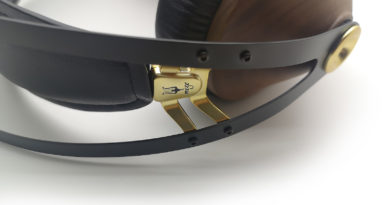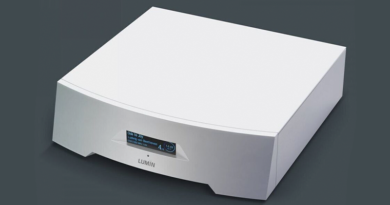Chord Hugo TT2 Review: towering over everyone
Today we are reviewing a digital-to-analog converter with headphone amplifier and digital pre-amplifier Chord Hugo TT2. Looking ahead, the device performed very extravagantly and impressed us in a good way. So, about everything in order.
Contents:
Introduction

Despite the external similarity and succession of the Chord Hugo TT2 with its progenitor, the previous version of the Hugo, the new model has been radically redesigned. The power of the decoding system has grown five times over the original Hugo and doubled the Hugo 2 – the quintessence of the company’s twenty years of development is on board. The design, again, has changed – John Franks was responsible for the new look of the system. The heart of the converter is the Xilinx Artix 7 FPGA (Field Programmable Gate Array) (first adopted in such systems), for which Rob Watts was responsible for programming – it consists of 86 cores, each of which operates in parallel at a frequency of 208 MHz and the overall design of the system is now based on ten elements, instead of the previous four-element scheme. The signal timing reconstruction filter, 16FS WTA 1, operates with 16-fold oversampling and 98,304 taps accuracy – recall that the Hugo 2 handled 49,152 factors.
Features

The output section of the device is completely discrete, guaranteeing a reference noise reduction. As a result, the technical characteristics of Chord Hugo TT2 are declared enchanting – distortion does not exceed 0.00008%, channel separation reaches 138 dB, and the dynamic range exceeds 127 dB. If this is not enough for you, the DAC can be easily upgraded using the proprietary Hugo M Scaler, which offers filtering with more than a million weighting factors (the story about it is a matter of a separate article).
Chord Hugo TT2 is now powered by a powerful 15V/4A external power supply using supercapacitors. The digital pre-amp and headphone amp sections are exceptionally serious, capable of rocking any headphone on the market. Output power reaches 288 mV into 300 ohms or 7.1 V into 8 ohms with unbalanced connection and goes up to 1.15 V into 300 ohms and 18 V into 8 ohms with balanced connection. The output impedance is negligible – only 0.042 ohms. According to these parameters, the model easily surpasses many market leaders, for example, dCS Bartok Class A, and approaches the reference “breakers” of headphones, such as Xi Audio Formula S.
Connectivity

Chord Hugo TT2 is equipped with a whole scattering of inputs, among which there are USB Type-B, a pair of coaxial BNC-based connectors, a pair of optical interfaces and even a Bluetooth AptX module. Outputs include XLR, RCA, a pair of 6.5 mm headphone jacks and one 3.5 mm minijack, as well as two DX BNCs (they are reserved for the future and can be used in the future with new devices from the company). The model is housed in a stylish machined aluminum case and weighs two and a half kilograms.

The volume control module is based on digital circuitry and has a complete shutdown option. From the custom settings Chord Hugo TT2 offers four options for setting the digital filter (as usual, the model showed the best results in our system with a neutral setting) and the Crossfeed stereo expansion processor for listening in headphones. The device can receive PCM signals with parameters up to 32 bit / 768 kHz, DSD – up to DoP 512 or pure DSD512 (Windows only). Alas, Chord Hugo TT2 has no support for the MQA format.
Design

As with the Qutest, the Chord Hugo TT2 is perfectly shaped inside. The design of the DAC is pleasing to the eye – you can only scold the slightly confused logic of the menu control. When paired with the Chord Hugo TT2 headphones, it performs very effectively, but the model fully reveals its talents when integrated into a High End class stereo complex.
Sound

We connected Chord Hugo TT2 to the path with the Roon ROCK server, a Sonore ultraRendu USB/Ethernet bridge (configured to function with DSD stream in DoP mode), an Audio Note UK M6 preamplifier, Audio Note UK Ankoru/II monoblocks and JBL DD67000 acoustics (all harness – LessLoss C-MARC) and… We were greatly surprised by the rich and surprisingly analogue presentation of the Chord Hugo TT2. Sometimes you can hear that the equipment of the company has the highest resolution, but demonstrates a “chirpy sound” with prevailing high frequencies and clinical plaque. Chord Hugo TT2 leaves no stone unturned on this statement!
His manner is more similar to a tube performance – velvety mids, absolutely transparent, “silk” high frequencies and amazing mobility of the musical picture. The highest timbre accuracy allows you to completely immerse yourself in the musical canvas, and attack and microdynamics will be the envy of the best devices on the market. If we compare the model with much more “weighty” brothers in terms of price, we can point out not some lack of resolution on bass – but, let me tell you, if you try to neutralize this, the device will cost several times more money. In its own and even with a “step up” price group, the new Chord offers everything that audiophiles can only dream of – and even beyond that. Gorgeous presentation, amazing plasticity and absolutely fatigue-free analog sound character. Bravo.
Conclusions

Digital technologies do not stand still – and this moment is especially noticeable in the development of the British company Chord Electronics. The Hugo TT2 DAC is a breakthrough device not only for its price, but also one of the most impressive modern devices in a much more expensive price segment.
Chord Hugo TT2 Specifications
Dynamic range: 127dB ‘A’ weighted
Noise: 4 uV ‘A’ weighted (high gain), 1.7 uV ‘A’ weighted (low gain) with no measurable noise floor modulation
Distortion: 0.00008% @ 2.5 V 300Ω; 0.00016% @ 6 W 8Ω
Output power (unbalanced): (@1% THD) 288 mW RMS 300Ω; 7.3 W RMS 8Ω
Output power (balanced): (@1% THD) 1.15 W RMS 300Ω; 18W RMS 8Ω
Output impedance: 0.042Ω
Stereo separation: 9 V RMS 300Ω -138dB
Dimensions: 5.2cm (H) 23.5cm (W) 23.8cm (D)




